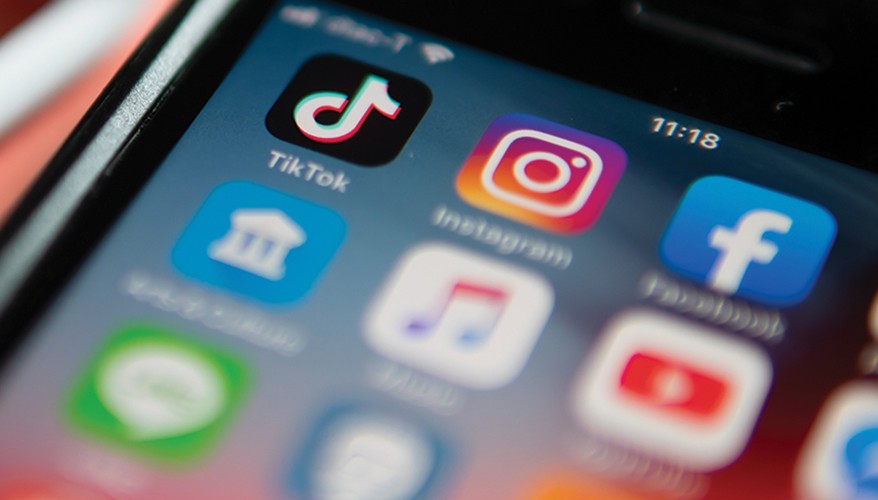La manipulación de las redes sociales por parte de actores malintencionados con el propósito de difundir desinformación representa una amenaza para todas las áreas de seguridad. Declarar como infraestructura crítica a las redes sociales parece ser la solución propuesta por diferentes organismos del gobierno y particulares en EE UU, mientras que el DoD trabaja en algoritmos para detectar falsas noticias o campañas de desinformación. ¿Será una medida de seguridad o el fin de la libertad en las redes sociales?
Twenty-eight percent of adults in the United States believe Bill Gates wants to use COVID-19 vaccines to implant microchips into people to track them, according to a Yahoo/YouGov poll released in late May.
Russian-state media outlets RT and Sputnik promoted false information on social media platforms stating handwashing is ineffective against stopping the spread of the virus.
This misinformation and confusion regarding the virus could result in thousands more deaths from a virus having already killed more than 120,000 Americans.
These harmful and conspiratorial beliefs are spread via the proliferation of disinformation on social media by adversarial foreign actors seeking to harm U.S. national security. To fight this, policymakers and defense leaders should declare social media critical infrastructure to allow them wider latitude when stopping the spread of disinformation.
Christopher Walker and Jessica Ludwig at the National Endowment for Democracy recently coined the term “sharp power” to describe the use of false information and propaganda by adversarial states to penetrate the political and information environments of targeted countries. Their overarching goal is to destabilize governments and civil society organizations by influencing the countries’ citizens.
Adversaries such as Russia, China and Iran spread incorrect and misleading statements over social media using armies of fake bot accounts and troll farms. Social media platforms use recommendation algorithms that then amplify this malicious content to users, until eventually the disinformation permeates public consciousness.
While COVID-19 is the proximate threat the nation faces, foreign disinformation campaigns have targeted countless other aspects of American life. Intelligence officials have concluded Russia conducted a widespread disinformation campaign to spread radicalizing information and sow mistrust in U.S. institutions prior to the 2016 election.
Iran and China have also started using these tactics, and the 2020 election will likely see millions of posts from bot accounts operated by adversaries seeking to sow discord.
The threat is not just limited to domestic security. On June 11, Twitter removed thousands of China-backed fake accounts that were spreading false information related to the Hong Kong protests and China’s coronavirus response in order to promote sympathy with the Chinese Communist Party and antipathy toward the West. Though a majority of Americans get some of their news off of social media, efforts to combat disinformation on these platforms have run into resistance as many of them view efforts to remove disinformation as an attempt to stymie free speech.
To counter threats to public health and national security, American social media networks should be designated as critical infrastructure as the United States seeks to thwart the pandemic and protect its electoral security. The Department of Homeland Security defines critical infrastructure sectors as those whose “assets, systems and networks … are considered so vital to the United States that their incapacitation or destruction would have a debilitating effect on security, national economic security, national public health or safety.”
Social media’s manipulation by malicious actors for the purposes of spreading disinformation poses a threat to all these security areas. Declaring social media critical infrastructure will emphasize the threat disinformation poses, motivating social media giants into taking meaningful steps to mitigate the spread of disinformation.
Our allies are already taking steps to combat the negative impact online disinformation has on their public consciousness. The European Commission recently took on the task of finding a way to combat disinformation related to the pandemic. On June 10, the EU outlined steps needed to successfully counter it. The plan calls for increased cooperation amongst EU member states, international partners and civil society to promote objective facts about the pandemic while dispelling false narratives promulgated by hostile foreign powers. Treating social media here as critical infrastructure could have the same effect making it an issue priority.
Treating online platforms as critical infrastructure in the fight against disinformation could also emphasize the need for public and private entities to put resources into research and development to stop disinformation, as well as allow for increased cooperation between private tech entities and the government.
For example, the Defense Advanced Research Projects Agency is working on the Semantic Forensics project, an attempt to develop algorithms that can successfully identify disinformation, as well as where it came from and whether or not it was an intentional malicious attempt to spread false information.
The increased focus that comes from being treated as critical infrastructure will push national security leaders to increase both R&D efforts to fight disinformation and collaboration between policymakers and industry on how to develop solutions to the threat disinformation poses. Viewing social media as critical infrastructure will also allow policymakers appropriate regulatory authorities toward social media platforms as they combat disinformation.
While the relatively nascent and online nature of social media may make a critical infrastructure designation seem gratuitous, foreign disinformation campaigns have the potential to disrupt multiple aspects of homeland security. In the last five years alone, foreign disinformation campaigns targeted public health, electoral security and trust in government. Defining social media as critical infrastructure and providing the resources and regulatory authority that accompany that designation would provide an effective way to win key battles in the “gray zone” likely to define competition between the United States and potential adversaries in the near term.


